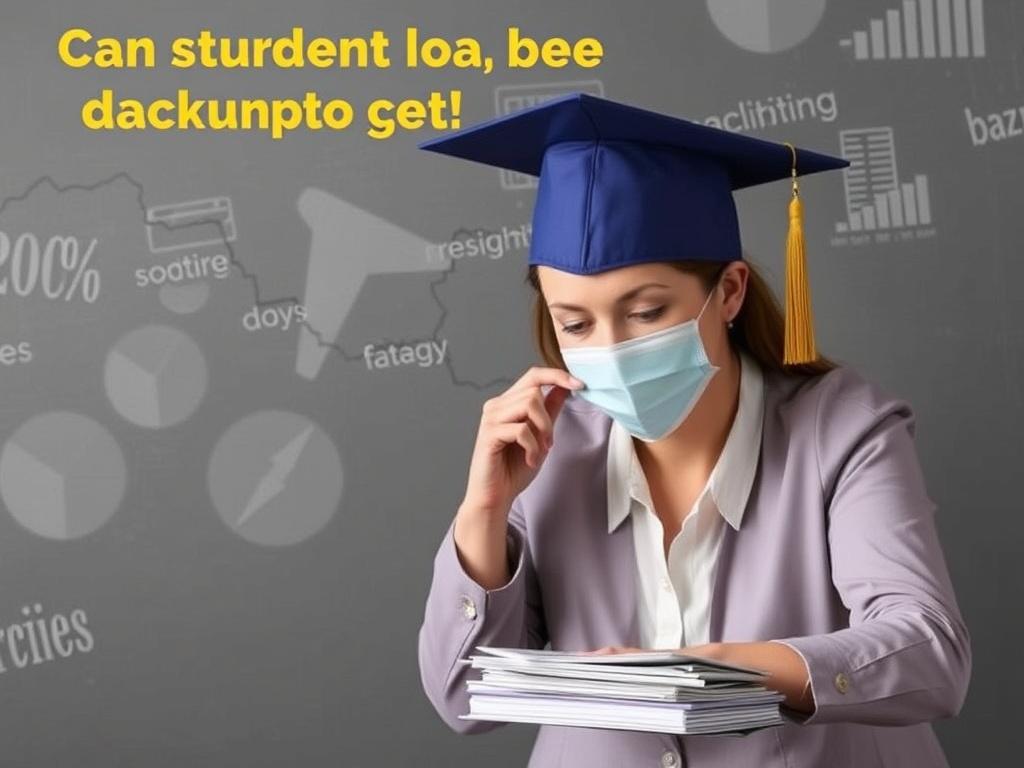SQLITE NOT INSTALLED
Student loans have become an inevitable reality for millions of people pursuing higher education. For many, they represent a pathway to opportunities and a better career, but for others, they become a heavy burden that’s tough to shake off. This naturally raises an important question: can student loans be discharged in bankruptcy? If you’re struggling with overwhelming debt, understanding the ins and outs of student loans and bankruptcy can bring clarity and possibly relief. Let’s dive into the details so you can make informed decisions about your financial future.
Содержание
Understanding Student Loans and Bankruptcy Basics
Before jumping into the specifics of whether student loans can be wiped clean through bankruptcy, it’s important to grasp a few basics. A bankruptcy is a legal proceeding designed to help individuals or businesses eliminate or repay their debts under the protection of the federal bankruptcy court. It’s a fresh start, but not all debts are created equal when it comes to dischargeability.
Student loans, in particular, are often treated differently from other types of debt like credit cards or medical bills. They’re either federal or private, and their discharge rules can vary. Most importantly, not all bankruptcies are the same; chapters 7 and 13 are the most common for individuals.
Types of Bankruptcy Relevant for Student Loan Discharge
Chapter 7 Bankruptcy
Chapter 7 bankruptcy is often called “liquidation bankruptcy.” It involves selling the debtor’s non-exempt assets to pay off creditors. For many struggling with student loans, filing Chapter 7 can provide quick relief by wiping out unsecured debts. However, student loans are usually exempt from discharge unless certain strict conditions are met.
Chapter 13 Bankruptcy
Chapter 13 bankruptcy, also known as a “wage earner’s plan,” allows individuals with a regular income to create a repayment plan over three to five years to pay off part of their debts. While student loans typically still need to be paid after Chapter 13, it can provide temporary relief by halting collections and reducing monthly payments during the repayment period.
Why Are Student Loans Hard to Discharge?
Student loans have a unique legal status, thanks in part to laws passed over the last few decades. Unlike credit card debts or medical bills, student loans are notoriously difficult to erase through bankruptcy. This is primarily because of the 1976 amendment to the Bankruptcy Code, which made student loans excepted from discharge unless the borrower can prove “undue hardship.”
What does “undue hardship” mean? This is the crux of the issue and where many borrowers get stuck. Courts generally interpret undue hardship as the inability to maintain a minimal standard of living while repaying the loan. It’s a high bar, and different courts have different standards.
Proving Undue Hardship: The Brunner Test
The most commonly used standard for discharging student loans in bankruptcy is called the Brunner Test, based on a 1987 court case. This involves meeting three strict criteria:
- Poverty: Proving that the borrower cannot maintain a minimal standard of living if forced to repay the loans.
- Persistence: Showing that the borrower’s financial situation is unlikely to improve for a significant portion of the repayment period.
- Good Faith: Demonstrating that the borrower has made sincere efforts to repay the loans, such as attempting income-driven repayment plans or loan consolidation.
Because of these conditions, only a small percentage of students who file for bankruptcy actually succeed in discharging their student loans.
Alternative Hardship Tests
While the Brunner Test is the most widely used, some jurisdictions have adopted other tests, like the “Totality of the Circumstances” test, which may be slightly more flexible. It looks at a broader range of factors when determining whether undue hardship exists.
Federal vs. Private Student Loans: What’s the Difference in Bankruptcy?
Unfortunately for most borrowers, the rules for discharging federal and private student loans in bankruptcy are quite similar, both requiring the demonstration of undue hardship. However, there are some nuances.
| Type of Student Loan | Bankruptcy Discharge Possibility | Special Considerations |
|---|---|---|
| Federal Student Loans | Possible but very difficult; requires proving undue hardship. | Some programs offer deferments or forgiveness; bankruptcy discharge rare. |
| Private Student Loans | Also difficult to discharge; requires undue hardship proof. | Sometimes more flexibility as private loans are contracts; however, most courts follow strict rules. |
It’s also worth noting that the federal government sometimes offers loan forgiveness programs based on employment or disability status, which can be an alternative to bankruptcy for federal loans.
The Process of Trying to Discharge Student Loans in Bankruptcy

If you’re considering bankruptcy to deal with student loans, it’s vital to understand the procedure involved. Unlike other debts, student loans require filing a separate lawsuit within the bankruptcy called an adversary proceeding.
Steps in Discharging Student Loans via Bankruptcy
- File for Bankruptcy: Begin by filing either Chapter 7 or Chapter 13 bankruptcy.
- Initiate Adversary Proceeding: You must file a separate complaint asking the court to discharge your student loans.
- Proof of Undue Hardship: Present evidence to the court demonstrating you meet the criteria for undue hardship, often using the Brunner Test.
- Court Hearing: Attend hearings where a judge will evaluate your financial situation.
- Decision: The court issues a ruling on whether your student loans can be discharged.
This process can be lengthy, expensive, and stressful, but it’s the only legal route to discharging student loans through bankruptcy.
Alternatives to Bankruptcy Discharge for Student Loan Debt

Given the difficulty in discharging student loans in bankruptcy, many borrowers look for other ways to manage or reduce their student loan burden. Here are some common alternatives:
Income-Driven Repayment Plans
Federal student loans often come with income-driven repayment plans that cap your monthly payments at a percentage of your income, potentially leading to loan forgiveness after 20-25 years of qualifying payments.
Loan Consolidation
Consolidating multiple federal loans into one can simplify payments and sometimes secure a lower interest rate or access to alternative repayment plans.
Student Loan Forgiveness Programs
Programs like Public Service Loan Forgiveness (PSLF) forgive remaining balances after a certain number of payments while working in qualifying public service jobs.
Deferment and Forbearance
Temporary suspension or reduction of payments may be available in cases of financial hardship, unemployment, or certain other circumstances.
Private Loan Negotiations
While private lenders don’t offer federal forgiveness programs, some may be open to negotiating repayment plans or settlements.
Common Misconceptions About Student Loan Discharge in Bankruptcy
Many people assume that bankruptcy means all debts, including student loans, will be wiped out automatically. This is not true for student loans. Let’s clear up a few common myths:
- Myth: Student loans can be discharged in any bankruptcy.
- Fact: Student loans require proving undue hardship, which is a challenging legal standard.
- Myth: Private student loans are easier to discharge than federal loans.
- Fact: Both loan types are difficult to discharge, but private loans depend heavily on the specific contract and jurisdiction.
- Myth: Student loans older than seven years can be discharged.
- Fact: The seven-year statute of limitations applies to credit card debts, not student loans, which remain collectible regardless of age.
Understanding these distinctions can prevent unnecessary frustration if you’re considering bankruptcy.
How Bankruptcy Affects Other Student Loan Options
Filing for bankruptcy doesn’t just affect your immediate debts; it can have repercussions on your student loans in ways you might not expect.
Impact on Federal Loan Benefits
If you file for bankruptcy and your student loans are not discharged, you might lose eligibility for some federal benefits like income-driven repayment plans or temporarily paused payments. Always consult a financial advisor before proceeding.
Credit Score Considerations
Bankruptcy significantly impacts your credit score, often dropping it sharply. Even if student loans aren’t discharged, the bankruptcy filing remains on your credit report for years, which can affect your ability to secure future credit, housing, or even employment.
Practical Steps if You’re Overwhelmed by Student Loan Debt
If you’re feeling buried under student loans but aren’t sure bankruptcy is right for you, here are some practical tips to consider:
- Create a Budget: Track your income and expenses to see where you can cut back.
- Contact Your Loan Servicer: Discuss all available repayment plans and deferment options.
- Explore Forgiveness Programs: Research if you qualify for any loan forgiveness programs.
- Seek Financial Counseling: Nonprofit credit counseling services can provide free guidance.
- Consider Refinancing: If you have good credit, refinancing your private loans might reduce interest costs.
- Consult a Bankruptcy Attorney: If you are seriously considering bankruptcy, professional advice is essential to understand your options and chances.
The Changing Landscape: Recent Developments and Proposed Reforms
Student loan debt remains a hot topic politically and socially, with ongoing discussions about reforming how these debts are treated in bankruptcy. Some policymakers argue that the “undue hardship” standard is too strict and suggest loosening rules to allow easier discharge of student loans through bankruptcy.
Recent years have also seen changes in income-driven repayment policies and temporary moratoriums on federal student loan payments that affect many borrowers’ financial situations.
Keep an eye on legislative changes which might make it easier in the future for borrowers to discharge student loans in bankruptcy or otherwise find relief.
Summary Table: Can Student Loans be Discharged in Bankruptcy?
| Aspect | Fact | Implication |
|---|---|---|
| Dischargeability | Student loans generally cannot be discharged without proving undue hardship. | Discharge is rare and requires additional legal steps. |
| Federal vs Private Loans | Both require undue hardship proof; federal loans have some forgiveness programs. | Eligibility for programs can provide alternatives to discharge. |
| Bankruptcy Chapters | Chapter 7 can clear other debts quickly, Chapter 13 offers repayment plans. | Neither automatically clears student loans without undue hardship. |
| Process | Discharging student loans requires an adversary proceeding within bankruptcy. | Legal assistance is often necessary. |
Conclusion

Navigating the question, “can student loans be discharged in bankruptcy?” is challenging because the answer isn’t straightforward. Student loans are deliberately designed to be difficult to erase through bankruptcy, largely due to the federal “undue hardship” requirement. This means most borrowers cannot simply declare bankruptcy and walk away from their student loan debt. However, this doesn’t leave you without options. Income-driven repayment plans, loan forgiveness programs, deferments, and careful financial planning can all provide much-needed relief outside of bankruptcy. For those seriously considering bankruptcy, it’s crucial to seek legal advice, understand the complex adversary proceeding process, and prepare to demonstrate your financial hardship comprehensively. Ultimately, while student loan discharge in bankruptcy is rare, it’s not impossible, and knowing your rights and alternatives empowers you to take control of your financial future.
Опубликовано: 23 July 2025 Кредитрон – блог о кредитах, финансах и прочих реверансах
Кредитрон – блог о кредитах, финансах и прочих реверансах

